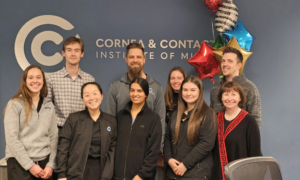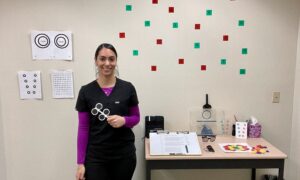By Roger Mummert
ROB Content Director

May 1, 2019
In business, fear can wield an outsize influence over critical decisions we make about the future.
We trade journalists play a role in this. We search for the “next big threat,” and often oversell our discoveries to a nervous readership. In my three decades chronicling optical, I have been part of reporting on numerous doomsday scenarios:
- Disposables contact lenses will be sold on drugstore shelves.
- Online sales will take the profit out of contact lens prescribing.
- Laser vision correction will make eyeglasses and contact lenses obsolete.
- Immersive and augmented reality devices will make ordinary eyeglasses look like Model T automobiles. You’ve got to get ahead of this and feature them in your optical.
- Online eyeglass retailers like Warby-Parker and Zenni Optical will expose unconscionable markups on frames and lenses at optical shops and dispensaries–and take over the market.
- Handheld refraction devices, or even smartphone apps, will enable consumers to self-administer eye exams that make ODs irrelevant.
The reality: All of these new products and trends have entered the market–and all have fallen short of the doomsday predictions that accompanied them. But that’s not to say they have had no effect; quite the contrary. They all had profound effects on how ODs view, plan and strategize the course of their careers. Because they all were scary.
The latest doomsday scenario
Now, to today’s doomsday projection: Private equity will own optometry.
Perception: Private equity-backed consolidators are swallowing up all viable independent eyecare practices–so you had better sell sooner than later if you want to get any money out of your practice.
Reality: At present, private-equity backed groups own 7.6 percent of all optometry practices and 5.3 percent of ophthalmology practices, according to estimates by Richard Edlow, OD, The Eyeconomist, who tracks this trend.
Other articles to Explore
Again, we trade journalists play a role in amplifying the PE effect. We assiduously report on PE-backed practice acquisitions, which often come in bunches, yet private sales of practices–one OD to another OD–go unreported, though they happen all the time. Are we helping to skew business decisions because of this?
Are traditional practice ownership models obsolete?
A traditional model of achieving practice ownership is to enter a practice as an associate, right out of school. Then, through either sweat equity or a staged financial buy-in, a young OD achieves partial ownership. The end game in this scenario, sometimes discussed informally and other times contracted, is that full ownership is achieved over time; the staged hand-off, the win-win.
In a recent interview with Dr. Edlow, this scenario was dissected in light of the salability of a practice to a PE-backed consolidator.
“If you’re looking to sell your practice, nail down the terms of your employment contracts with associate ODs or even let them play out,” Dr. Edlow advises. “The last thing a consolidator wants to buy is a dysfunctional family.”
Just how large the PE-effect will be has yet to be seen, but it raises fundamental questions for emerging ODs:
- Why should I, coming out of optometry school, enter an “eventual ownership” scenario? Why should I help to build a practice that won’t benefit me when the OD-owner sells?
And it raises questions for the mature OD-owner:
- Why should I, as a practice owner looking down the road at retirement, complicate and limit the salability of my practice with employment contracts to ODs whom the buyer may not want to retain?
Good questions, but back to reality: 92.4 percent of optometry practices are not owned by PE-backed firms. And there are good answers to these tough questions that support private ownership. But interject fear, and many owners or prospective owners may make a rash decision.
At the recent Vision Expo, I sat down with some of the Vision Source leadership team to discuss Vision Source Next, a program designed to further independent practice ownership. (Watch for an upcoming ROB video series on the subject.) They reported that the Next program is on track with helping to open about 40 new independent practices per year.
And, yes, ROB should be–indeed, will be–reporting on that trend.
When it comes to the issues of practice ownership and transition, there is no single right answer for everyone. But there is one common imperative: To make a judicious decision on practice ownership, you need to manage the fear factor.
 Roger Mummert is ROB Content Director. To contact: Rmummert@jobson.com
Roger Mummert is ROB Content Director. To contact: Rmummert@jobson.com



























